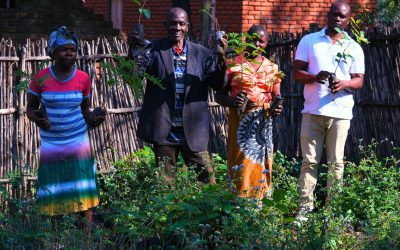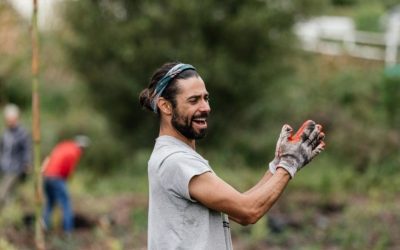What is Urban Greening, and does it make a difference?
22
NOVEMBER, 2022
By Jack Grant
With the majority of people across the world living in densely populated areas, it is easier than ever to lose touch with nature, and its many benefits to the mind, body and soul. Urban greening aims to change that. Here are some amazing benefits of urban greening and some surprising facts you may not have known.
Opening conversations around nature and mental health
Covid-19 changed the world in many ways when it brought everybody indoors. With global reports of anxiety and depression increasing by 25% in the first year of the pandemic, according to the World Health Organisation. The coronavirus pandemic has brought long overdue attention to mental health issues around the world. So, now that we are looking at mental health issues, we can consider potential solutions to the problem.
If you’re lucky enough to speak with somebody when you’re feeling down, the first thing many people will tell you is to “get outside!”, “Go out for a walk” or “Spend time in nature!”. Even the World Health Organization (WHO) recommends that we live within 300 meters of a green space. However, with 60% of the global population living in urban environments, this isn’t exactly possible for everybody, especially those living in densely populated urban centres or unprivileged areas. If everybody is talking about how great it feels to be amongst nature but most of us are living in cities, what can be done to bring the natural world into our cities and towns?
What is Urban Greening?
While there is no widely accepted definition of the term urban greening, as a concept it is quite self-explanatory. Put simply, it’s the greening of urban spaces, which can take many forms. You might be aware of concepts like green walls or green rooftops, and while they provide visually striking representations, they are not the only examples.
Urban Greening can be targeted to address specific outcomes and many of these are overlapping. For example, you might create a green space around a hospital to improve recovery times for patients or you might plant a hedgerow as a sound barrier between a busy road and a residential area. In fact, there are a range of inspiring examples of urban greening within cities. With these tools in hand, how can we utilise urban greening to address mental well-being?

Recent photograph of Singapore – a shining example of urban greening in action.
What are the Environmental Impacts of urban greening?
WHO, the World Health Organisation not the band, has laid out a wide range of social, environmental and personal benefits of urban greening projects within its Urban Green spaces and health: review of evidence. On an environmental level, urban green spaces have been proven to provide ecosystem services like:
- Air filtration
- Carbon storage
- Temperature control
- Air quality management
- Extreme weather protection and mitigation
What are the personal impacts of Urban Greening?
Furthermore, on a more personal level, they have identified economic benefits like increased real estate prices and land values. Urban green space projects are reported to improve social cohesion among participants and those living in the local area. The Biophilia Hypothesis, in which humans have an ‘innate and natural affiliation with nature’ is the founding principle in understanding how green spaces can impact health outcomes. In physical terms, it’s been demonstrated that green spaces contribute to improvements in general physical health factors including;
- Allergy effects
- Cardiovascular effects
- General injury recovery
- Mortality rates, obesity
- Pregnancy outcomes
- Vector-borne diseases
It’s suggested that proximity to green space can help to reduce the pain burden by bringing us in contact with biodiverse environmental microbiomes, suggesting a biological connection between humans and nature.

Closer proximity to green spacaes may create a deeper connection with the natural world than we knew.
Virtual Nature: nature in virtual reality?
One farmer in Turkey, has gone so far as to start attaching virtual reality headsets to his cows, virtually taking them outdoors to green pastures. While this may border on ridiculous, the farmer has reported an increase of 5 litres of milk per day, when using headsets, stating they “are less stressed”. This virtual effect crosses the bovine boundary over to humans in the healthcare sector, with successful cases of ‘Virtual Nature’ for hospital patients with chronic illnesses and disabilities reporting increased relaxation.

Green Spaces and Mental Health
With its wide range of impacts, from increasing land values to improved recovery times, it becomes clear how these benefits of urban green spaces can feed into individual mental health. Doctors are even starting to give patients ‘green prescriptions’, which encourages them to spend more time in nature.
But how exactly does green space impact mental health? Specifically, when thinking about the effects of urban greening on mental health, WHO has identified:
- Reductions in feelings of isolation
- Reductions in depression
- Improved life satisfaction
- Improved Quality of life
- Enhancements to cognitive functions
- All round better psychological well-being.

Spending time in nature has a variety of benefits for the mind, body and soul.
What can I do? Urban greening for you
Now that we’ve established what urban greening is and why we do it, you must be wondering how you can get involved.Here’s are a few steps to get your started:
- How can you increase your exposure to green spaces? On a personal level, if you’re lucky enough to have one, it starts in your back garden.
- How do you manage it? Is it sustainable? Does it provide you with ample enjoyment? If you haven’t got a backyard to start with, you can make a humble beginning at home with plants on window ledges and countertops. You might want to propagate your own home and garden from the wild, provided you do it safely and sustainably by following this propagation guide.
- Looking outdoors towards your surrounding area, you might want to seek out or start your own community garden, to connect with people in your area. If socialising isn’t your cup of tea, you might look to rent a patch on an allotment and garden it to provide yourself with fruit & vegetables to save money.
- You might want to encourage your local government representatives to do more to increase utilisation of municipal buildings like schools, hospitals and town centres for green space interventions. Further than this, you might want to seek out an NGO to donate to or volunteer for in your spare time.

Try propogating some of your house plants to increase your contact with nature within your own home.
Re-energising from the outside in
It’s clear, on the balance of available evidence, that urban greening interventions can be a fundamental step not only to creating climate resilience, but also, more importantly, mental resilience within urban population centres. If urban greening leads to increased land values, improved social cohesion, improved recovery times along with greatly enhancing social and mental well-being, then more can be done by all of us to engage with one another to get our hands dirty and create more urban green spaces that we can all feel good about.
Learn more about our Urban Greening programme here at Greenpop.
The Intersection Between Human and Ecological Health: The Mulanje Landscape Restoration Project
Read more about Greenpop’s partnership with Mulanje Mission Hospital and the environmental restoration work they’re doing in Mulanje, Malawi.
Lessons in Sustainable Eventing From Greenpop’s Reforest Fest
Discover how Reforest Fest is redefining sustainable eventing in South Africa, from zero-waste practices, local sourcing and tree planting.
Arbor Month 2024: A Letter From Our Director, Misha Teasdale
The key to successful tree planting is understanding the local environment and recognising a tree’s potential for greater ecosystem health.
Greenpop Foundation NPC is a registered non-profit organisation. Registration Number (NPO): 151-411 NPO.



